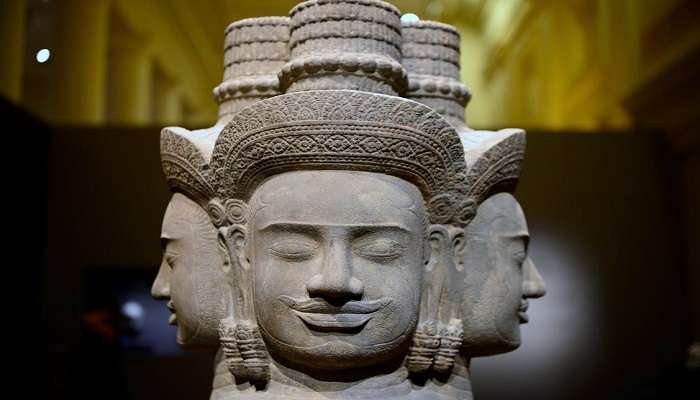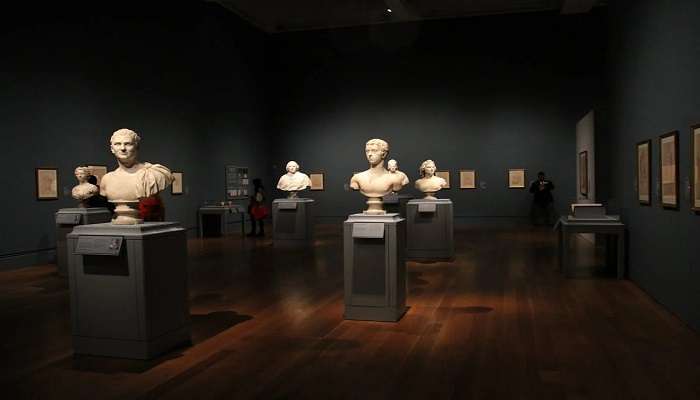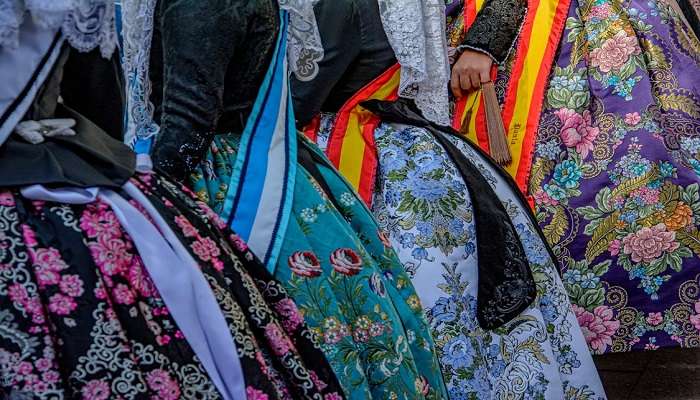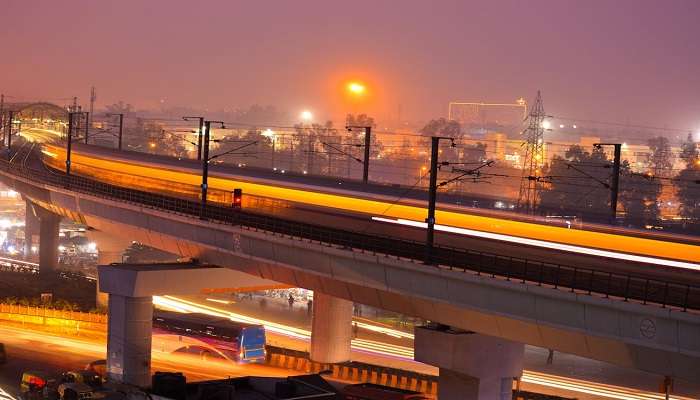Visit Don Bosco Museum Shillong And Get A Peek Into The Cultural Lifestyles Of North East India In 2025

The Don Bosco Museum Shillong in Meghalaya is a captivating gateway to Northeast India’s rich cultural history. This seven-story architectural marvel showcases the diverse heritage of the region’s indigenous communities. As visitors ascend through the museum’s levels, they explore artefacts, artworks, and exhibits that bring to life the unique customs, attire, and lifestyles of various tribes. A visit to the Don Bosco Museum promises an enlightening and immersive experience for all who seek to understand the essence of Northeast India.
About Don Bosco Museum Shillong

The Don Bosco Museum, located in Shillong’s Mawlai area, is known for its dedication to preserving and promoting North East India’s diverse cultures. It’s also recognised as Asia’s largest Museum of Indigenous Cultures. The museum, which spans over 56,000 sq km of floor space and over 15,000 sq km of display wall space, houses a vast collection of motifs, artefacts, and representations from the region’s numerous tribes.
Upon entering the seven-storey building, visitors are welcomed by the traditional attire of all the different North-Eastern communities. The museum also features comprehensive sections on neighbouring countries like Bhutan, Myanmar, and Nepal. It offers a range of galleries, each focusing on a specific aspect of North-Eastern culture, including the Pre-history Gallery, the Land and People Gallery, and exhibits on Traditional Technology.
Galleries are also dedicated to art, music, housing, weapons, and food. Each gallery provides a unique insight into the indigenous people’s practices, lifestyles, and traditions. The Don Bosco Museum is a visual treat and a rich source of knowledge about the North-Eastern people and their way of life.
Also Read: Lakes In New Zealand
Galleries At Don Bosco Museum Shillong

The Don Bosco Museum Shillong is a unique seven-storey tower with 17 galleries. Each gallery is dedicated to showcasing a different facet of the rich and diverse cultures of North-East India. They are as follows:
1. Prehistory Gallery: This gallery presents a journey into the prehistoric and archaeological heritage of North-East India. It showcases artefacts such as stone tools, fossils, pottery, coins, and inscriptions. Maps and models illustrate the migration and settlement patterns of the region’s inhabitants, providing insights into ancient civilisations and their development.
2. Land and People Gallery: Focused on geographical and demographic aspects, this gallery highlights the region’s diverse geography, including rivers, mountains, forests, and wildlife. It features flags and emblems of the eight states alongside profiles of notable personalities. Photographs depict the region’s richness and the lifestyles shaped by its natural environment.
3. Fishing Gallery: Dedicated to the traditional fishing practices of North-East India, this gallery displays various fishing methods, equipment, and the diverse aquatic life found in the region. It also explores the cultural rituals and festivals associated with fishing, emphasising its significance in local communities.
4. Hunting Gallery: This gallery showcases traditional hunting techniques, equipment, and the wildlife hunted in North-East India. It delves into the cultural significance of hunting through rituals and festivals, offering insights into the relationship between communities and their natural surroundings.
5. Agriculture Gallery: This gallery highlights agricultural practices, such as shifting cultivation, terrace farming, and wet rice cultivation. It showcases local communities’ crops, fruits, and farming tools, illustrating sustainable agricultural traditions adapted to the region’s terrain.
6. Technology Gallery: This gallery explores indigenous technologies and innovations, including weaving, pottery, metalwork, woodwork, and papermaking. It exhibits products and artefacts crafted using traditional methods, illustrating the technological prowess and creativity of North-Eastern artisans across different crafts.
7. Art Gallery: This gallery showcases the region’s heritage. It features various art forms such as painting, sculpture, carving, embroidery, and beadwork. It explores local artists’ materials, motifs, and techniques, reflecting cultural expressions and artistic sensibilities unique to Northeast India.
8. Music Gallery: Celebrating the region’s musical traditions, this gallery displays a variety of musical instruments and genres. It provides insights into the cultural significance of music in daily life, religious ceremonies, and festive celebrations, highlighting the diversity and vibrancy of North-Eastern musical heritage.
9. Religion Gallery: This gallery explores the religious beliefs, practices, and traditions of North-East India. It features symbols, icons, idols, scriptures, and rituals associated with various religions followed in the region. It offers a glimpse into spiritual aspects that shape community identities.
10. Weapons Gallery: Dedicated to martial traditions, this gallery exhibits weapons and warfare practices historically used in North-East India. It showcases artefacts related to battles, conflicts, and heroic tales, emphasising the role of defence and valour in regional history and cultural narratives.
11. Costumes Gallery: This gallery showcases traditional attire and clothing styles, including costumes worn during festivals, rituals, and everyday life in Northeast India. It explores fabrics, designs, and colours that symbolise cultural diversity and identity within different communities of the region.
12. Housing Gallery: This gallery highlights architectural diversity by presenting various housing styles and construction techniques prevalent in Northeast India. It showcases materials, designs, and cultural influences shaping regional architecture, reflecting adaptation to local climates and environments.
13. Food Gallery: This gallery celebrates the culinary traditions of North-East India, showcasing a variety of dishes, delicacies, and cooking methods. It explores the cultural significance of food in social gatherings, festivals, and daily life, illustrating regional tastes and gastronomic diversity.
14. Basketry Gallery: Dedicated to traditional basketry and weaving practices, this gallery exhibits a range of baskets, mats, and woven products. It explores patterns, styles, and techniques artisans employ, highlighting the craftsmanship and cultural significance of these traditional crafts.
15. Ornaments Gallery: This gallery showcases traditional ornaments and jewellery worn in Northeast India. It features diverse materials, designs, and meanings associated with adornments and explores jewellery’s cultural and social roles in rituals, ceremonies, and personal adornment across different communities.
16. Festivals Gallery: Celebrating the vibrant festival culture of North-East India, this gallery exhibits various festivals, customs, and traditions. It showcases the diversity of dances, performances, and rituals associated with festive celebrations, illustrating the region’s rich cultural tapestry.
17. Documentation Gallery: This gallery focuses on documentation and research projects related to the indigenous cultures of North-East India. It displays records, publications, and multimedia presentations that contribute to preserving and promoting the region’s regional heritage, serving as a resource for scholars and visitors alike.
imings And Entrance Fees Of The Museum

The Don Bosco Museum Shillong welcomes visitors from 9:00 AM to 5:30 PM daily except Sundays when closed. Entry fees are Rs 100 for Indians and INR 50 for Indian students (with valid ID), while foreigners are charged INR 200 and foreign students INR 150 (with valid ID).
The museum’s location in Shillong provides cultural insights and panoramic views of the city and surrounding hills from its skywalk, making it a must-visit destination for anyone interested in North-Eastern culture and history.
Related Post: Meghalaya Travel Tips
How To Reach Don Bosco Museum Shillong?

To reach the Don Bosco Museum in Shillong, you have a few convenient options:
By Car
The Don Bosco Museum is conveniently located about 2.8 kilometres from the city centre. The 4th Furlong Point route takes about 10 minutes to reach it.
On Foot
If you prefer walking, the museum is also 2.8 kilometres from the city centre. Take the 4th Furlong Route, which will take approximately 40 minutes to reach on foot.
You May Also Like To Read: Shopping In Meghalaya
The Don Bosco Museum Shillong is like a journey through the different cultures of Northeast India. It has seven floors with displays, things you can interact with, and lots to look at. If you enjoy history, art, or want to learn about the special cultures of Northeast India, this museum is a great place to visit. You’ll leave with a better understanding and appreciation for the traditions and people of the area. Are you excited to discover Meghalaya’s wonders? Make sure to visit this amazing museum and enjoy learning about the lively cultures of Northeast India. Book your trip to Meghalaya today and discover the hidden gems of this enchanting state!
For our editorial codes of conduct and copyright disclaimer, please click here.
Cover Image Source: Pexels
Frequently Asked Questions About Don Bosco Museum Shillong
What can visitors expect to see at the Don Bosco Museum?
Visitors can explore seven floors of exhibits that highlight the rich cultural diversity of Northeast India, including traditional artefacts, photographs, and interactive displays.
Is photography allowed inside the museum?
No, photography is not permitted inside the museum to preserve the artefacts and exhibits. However, visitors can take photographs from the outside balcony areas.
How much time should visitors allocate for a visit to the Don Bosco Museum?
A typical visit to the museum can range from 1.5 to 2 hours, depending on the level of interest in exploring the exhibits in detail.
Are there any facilities for visitors, such as a cafeteria or souvenir shop?
Yes, the museum has a cafeteria serving refreshments and a souvenir shop where visitors can purchase local handicrafts and memorabilia.
Is the Don Bosco Museum accessible to people with disabilities?
The museum is equipped with elevators and ramps to ensure accessibility for visitors with disabilities, making it inclusive for all to enjoy its exhibits.
People Also Read:
Neka Art Museum George Museum Museums In Bari

Unveil the hidden treasures of the globe and turn every travel dream into reality. As a Content Writer, I am passionate enough to craft stories from ancient wonders to modern marvels. My words paint the picture-perfect itinerary for unforgettable experiences. Let my words be your trusted guide to immerse in the diverse culture and discover the beauty of the unknown.











